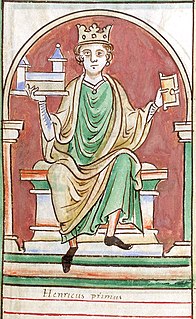
Carisbrooke Castle is a historic motte-and-bailey castle located in the village of Carisbrooke, Isle of Wight, England. Charles I was imprisoned at the castle in the months prior to his trial.

Kingston Russell is a large mansion house and manor near Long Bredy in Dorset, England, west of Dorchester. The present house dates from the late 17th century but in 1730 was clad in a white Georgian stone facade. The house was restored in 1913, and at the same time the gardens were laid out.

Carisbrooke is a village on the south western outskirts of Newport, Isle of Wight and is best known as the site of Carisbrooke Castle. It also has a medieval parish church. St Mary's Church, began life as part of a Benedictine priory, established by French monks about 1150. The priory was dissolved by King Henry V of England in 1415 during the French Wars. Neglect over the centuries took its toll, but in 1907 the church was restored to its full glory. Its most striking feature is the 14th century tower, rising in five stages with a turret at one corner and a battlemented and pinnacled crown.

Baldwin de Redvers, 6th Earl of Devon, feudal baron of Plympton in Devon and Lord of the Isle of Wight, was the son of Baldwin de Redvers and Margaret FitzGerold and grandson of William de Redvers, 5th Earl of Devon.

Pishiobury, sometimes spelled Pishobury, was a manor and estate in medieval Sawbridgeworth, Hertfordshire. Its denomination as "Pishiobury" only emerged in the mid to late 19th century.
The Lord of the Isle of Wight is a title that began when William the Conqueror granted the Isle of Wight to William Fitz Osbern. It was a hereditary title.
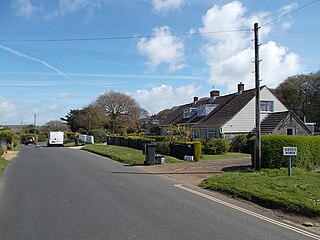
Queen's Bower is a large village on the Isle of Wight, England that has effectively merged with Winford and Apse Heath. It is classed as part of Sandown, with the postcode PO36. It is in the civil parish of Newchurch, Isle of Wight. Transport is provided by Southern Vectis bus route 8 to Sandown, which stops at Hairpin Bend on Alverstone Road once every hour throughout the day, which is right on the perimeter of Borthwood Copse.
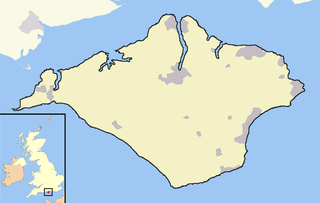
Wihtwara was the kingdom founded on the Isle of Wight, a 147-square-mile (380 km2) island off the south coast of England, during the Anglo-Saxon settlement of Britain. The name was derived from the Jutish name Wihtwara. Its capital was a fort named Wihtwarasburgh. It has been suggested that the modern-day village of Carisbrooke was built on top of Wihtwarasburgh due to the fact that they share their location. It has also been suggested that Wihtwarasburgh was built on top of a pre-existing Roman fort, but this has not been proven.

Isabel de Forz or Isabel de Redvers was the eldest daughter of Baldwin de Redvers, 6th Earl of Devon (1217–1245). On the death of her brother Baldwin de Redvers, 7th Earl of Devon in 1262, without children, she inherited suo jure the earldom and also the feudal barony of Plympton in Devon, and the Lordship of the Isle of Wight. After the early death of her husband and her brother, before she was thirty years old, she inherited their estates and became one of the richest women in England, living mainly in Carisbrooke Castle on the Isle of Wight, which she held from the king as tenant-in-chief.
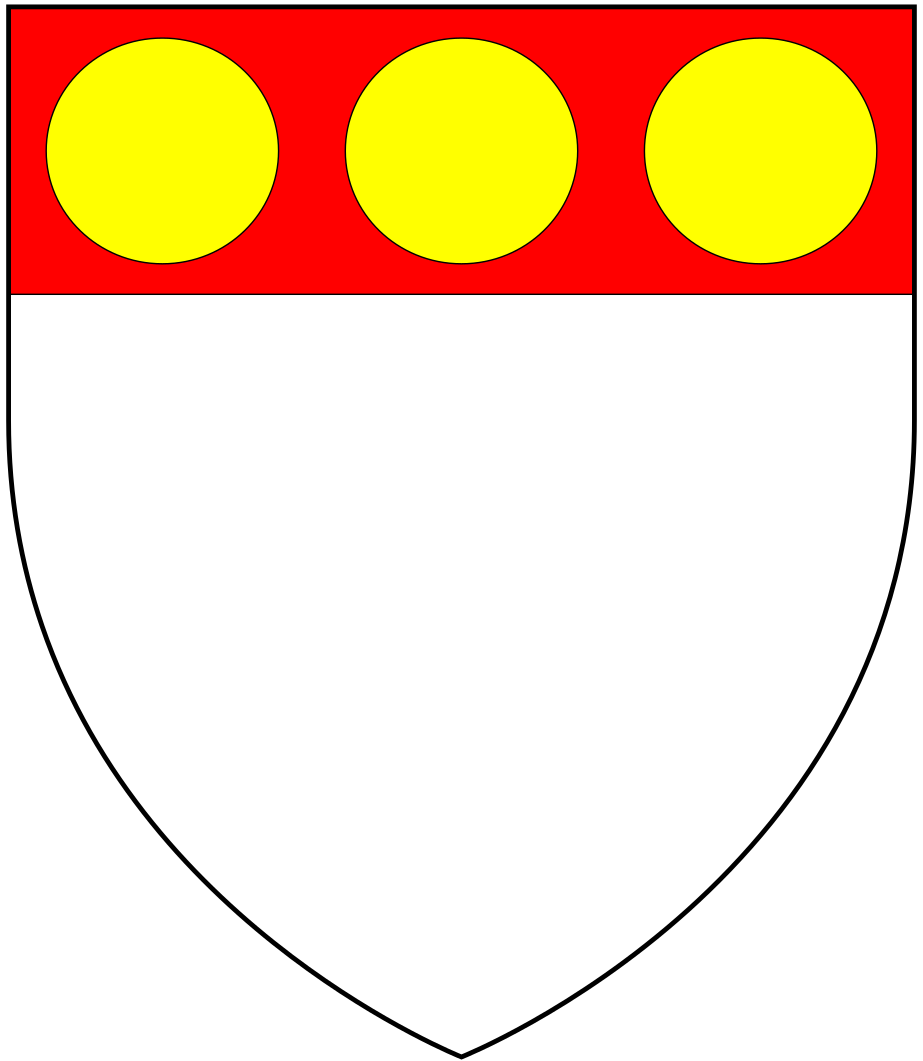
Sir William Russell (1257–1311) was an English nobleman, knight, and holder of a moiety of the feudal barony of North Cadbury, Somerset, but spent most of his life engaged in the administration and defence of the Isle of Wight, where he obtained by marriage the manor of Yaverland. He served as constable of Carisbrooke Castle, and sat in parliament on two occasions, firstly as burgess for Great Bedwyn, Wiltshire, and then for the County of Southampton. As a baron his military service was called on several times by King Edward I Hammer of the Scots.
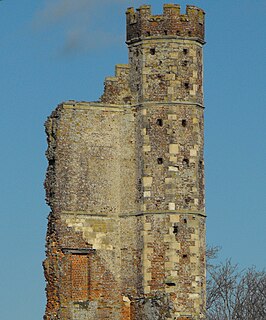
Warblington Castle or Warblington manor was a moated manor near Langstone in Hampshire that today consists of little more than one turret, part of the old gatehouse.
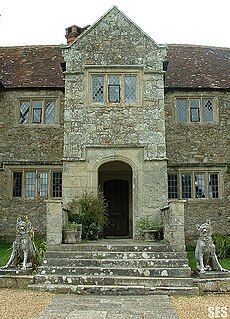
Arreton Manor is a manor house in Arreton, Isle of Wight, England. Its history is traced to 872 AD to the time of King Alfred the Great and his parents. It was left by King Alfred by his will to his youngest son Aethelweard. Once owned by William the Conqueror, as mentioned in the Domesday Book in 1086, in the 12th century it became part of Quarr Abbey and was used by the monks for over 400 years. In 1525 it was leased to the Leigh family. The manor was rebuilt between 1595 and 1612. Built in Jacobean style, it is in the shape of a "H". It is also widely known on the Isle of Wight in folklore for its paranormal activity, particularly the ghost of a young girl named Annabelle Leigh who was murdered at the manor by her own brother in 1560.
Wroxall Manor was a manor house on the Isle of Wight, situated in the Newchurch parish.
Merston Manor is a manor house in Merstone on the Isle of Wight, England. The manor was first mentioned in the Domesday Book. Prior to the Norman Conquest, Merston Manor was owned by the Brictuin family. The present home, built in 1605 in the Jacobean style by Edward Cheeke, was rebuilt in the Victorian era. This structure may be the oldest brick house on the Island. The manor now belongs to the Crofts family.
Billingham Manor is a manor house lying about a mile south of the village of Chillerton on the Isle of Wight.

Northcourt Manor is one of three manor houses, along with Woolverton and Westcourt, that is located in Shorwell, on the Isle of Wight, England. It was begun by Sir John Leigh, Deputy Governor of the Island, in 1615, but was unfinished at his death. Northcourt is currently in use as a hotel.

The history of Barton Manor spans over 900 years and was first mentioned in the Domesday Book of 1086. It is a Jacobean manor house in Whippingham, on the Isle of Wight. While it retains two 17th century elevations, other frontages were renovated, as was the interior in the 19th century. Two medieval lancet windows originated at a former Augustinian priory. Barton is the most northerly of all the Island manor houses.

Westcourt Manor is one of three manor houses, along with Woolverton and Northcourt, that is located in Shorwell, on the Isle of Wight, England. According to the Domesday Book, it was part of the possessions of Gozehne Fitz Azor, and had been held in the time of the Edward the Confessor by Ulnod in abeyance. At the time of the countess Isabella's record, we find that Sir John Lisle had this manor, with many others, which he held of her in capite, or by knight's service. It was possessed by Colonel Hill. An Elizabethan manor, it is connected to a farm of 200 acres.
The Manor of Dyrham was a former manorial estate in the parish of Dyrham in South Gloucestershire, England.




